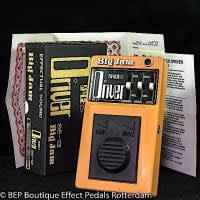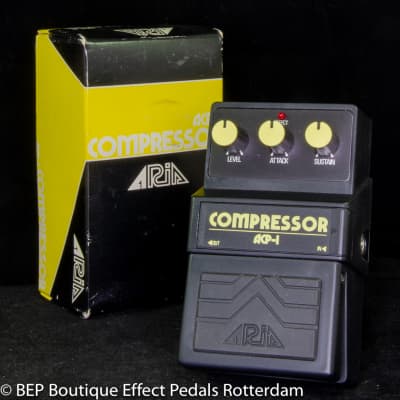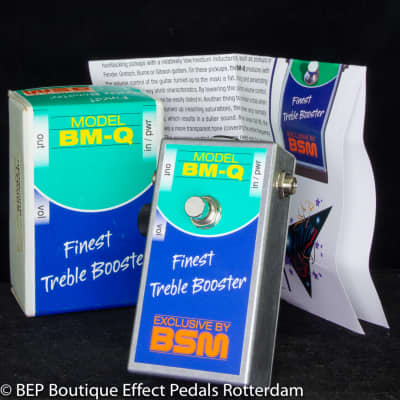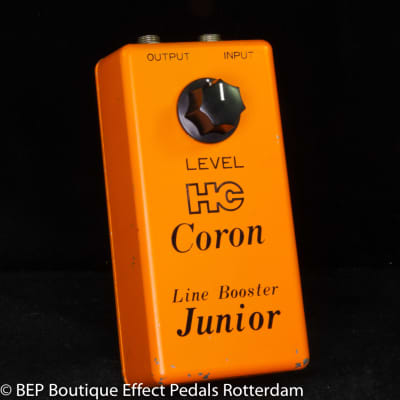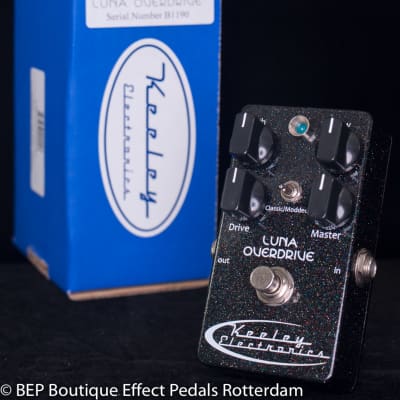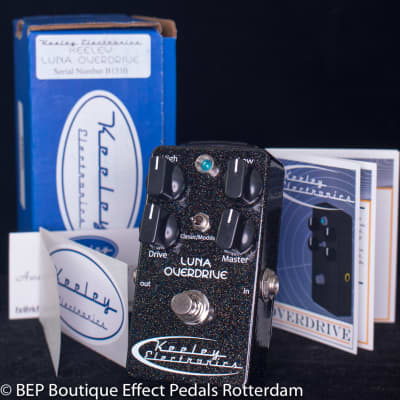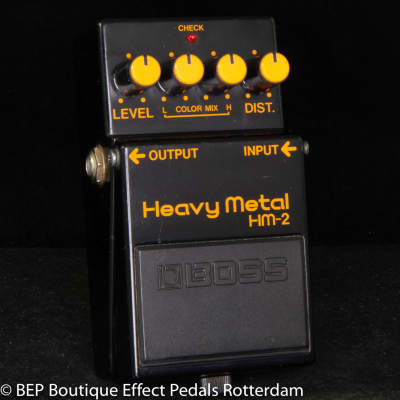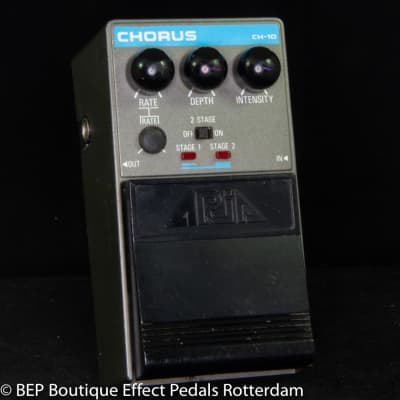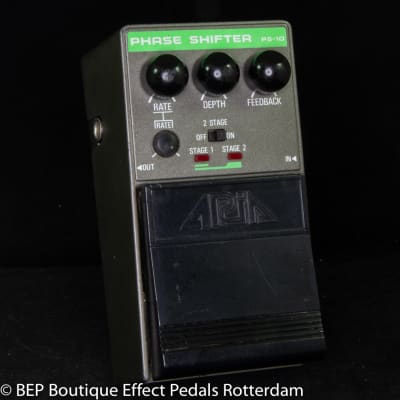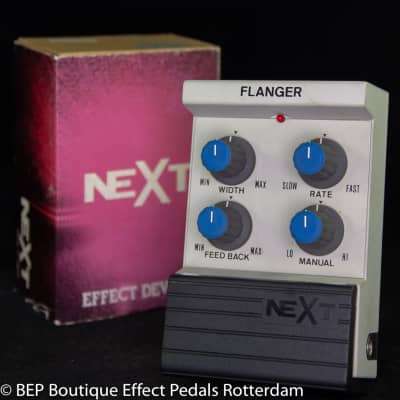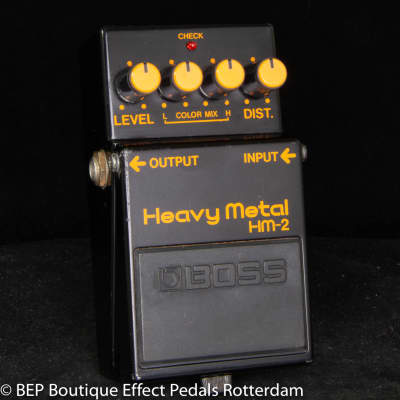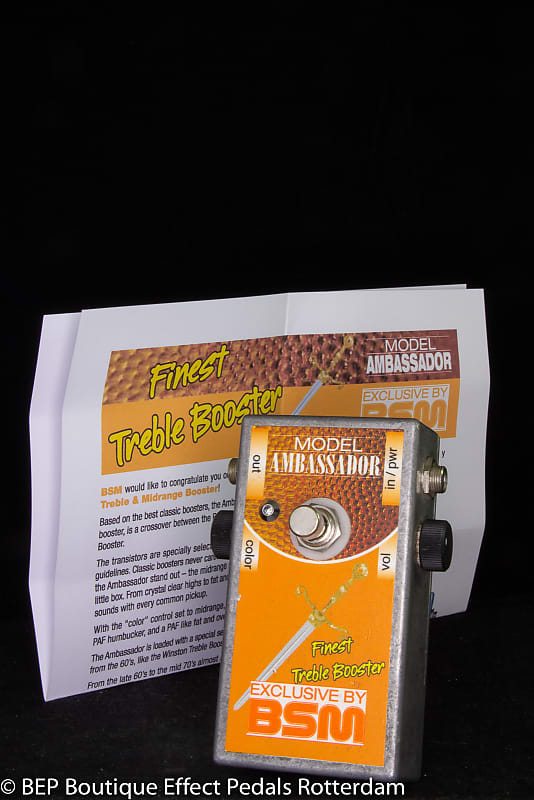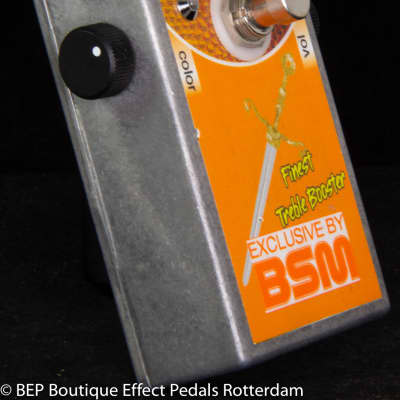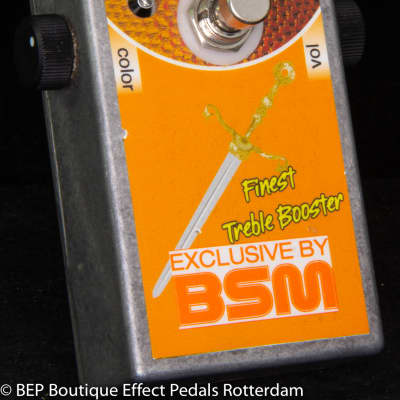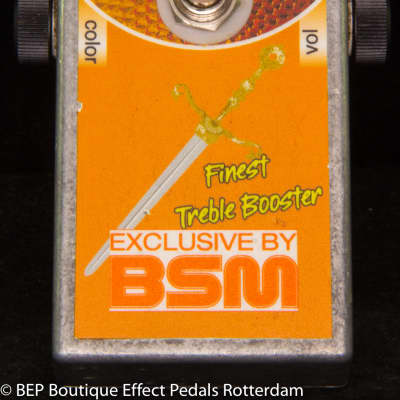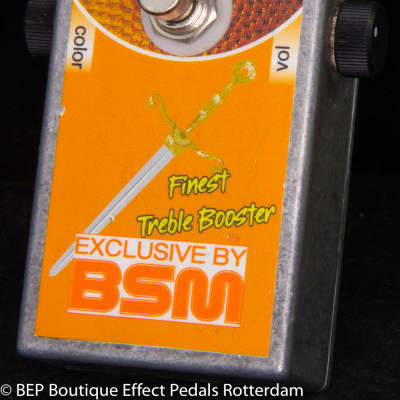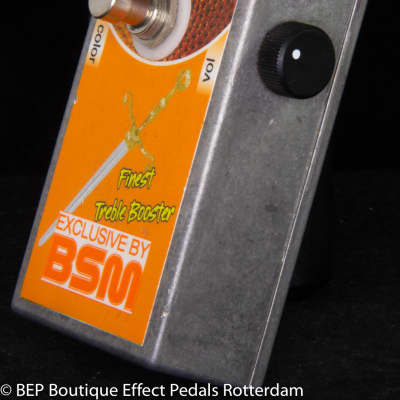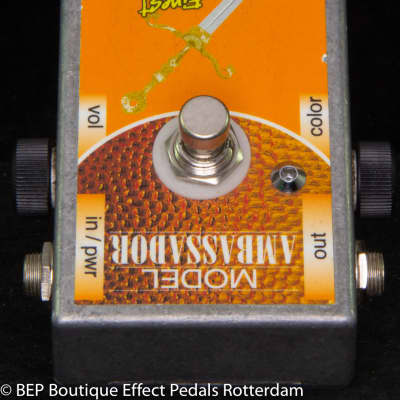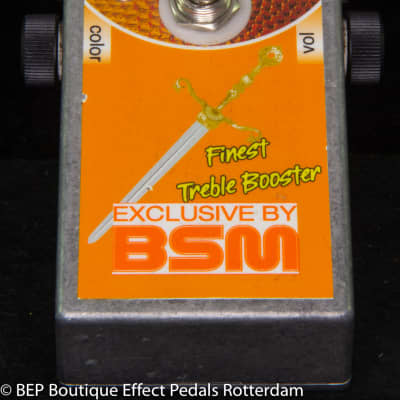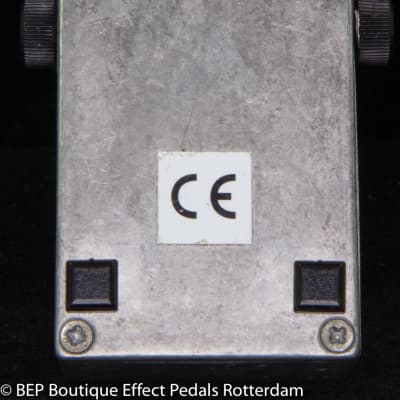BSM Ambassador Custom Mid-Voiced Treble Booster s/n 1814 in excellent condition with instruction sheet. This BSM Ambassador has a LED which was custom made.
Based on the best classic boosters, the BSM Ambassador - a germanium treble/midrange booster, is a crossover between the Rangemaster Booster, the Orange Booster and the Winston Booster. The transistors are specially selected to pass the strict internal BSM factory QC guidelines. Classic boosters never cared about the midrange, and that's what makes the Ambassador stand out - the midrange and the treble range are both inside this little box. From crystal clear highs to fat and meaty mids, it's easy to dial in all these sounds with every common pickup. With the "color" control set to midrange, a singlecoil pickup really sounds like a PAF humbucker, and a PAF like fat and overwounded humbucker. The Ambassador is loaded with a special selected original NOS germanium transistor from the 60's, like the Winston Treble Booster was.
From the late 60's to the mid 70's almost all british rock guitarists used single coil pickup guitars and some type of germanium booster. By the end of the seventies, these boosters were replaced by a new circuit from Japan, the socalled Tube Screamer and other similar overdrive circuits. These were based on the old boosters and therefore had a very similar frequency response. The germanium boosters on the other hand, sadly fell into oblivion despite their unique and inimitable sound.
The Ambassador Booster is inserted between the guitar and the amplifier, not into the FX loop. The magical tone is achieved by the interaction between guitar pickup, booster and amplifier. The unit is powered by a 9V battery with a current consumption of aprox. 250 uA. The average output level is 7dBm, the maximum output voltage when the strings are struck really hard is 5V max. Note: The positive pole of the battery is ground.
Interview with Bernd C. Meiser ;
BSM is run by Bernd C. and Steffi Meiser in Germany.
How did BSM start?
I was about 13 years and went to an electronics school here in Germany. I read electronics magazines and in one was a DIY kit for a silicon Fuzz (FuzzFace style) and a treble Booster (Rangemaster clone). These where my very first stompboxes. I also learned to play guitar by myself.
I was editor in the German "Gitarre & Bass" magazine and wrote about historical stompboxes. When I wrote about the treble boosters, especially the Hornby Skewes Treble Booster, Ritchie Blackmore's booster), many guys contacted me to ask if I could build this booster for them. By accident, the schematics were not printed, because the column was too long and a few schematics were simply deleted. So, I began to build the first batch of commercial Boosters. This was in 2003.
I work alone since the beginning. Only my stickers for the boxes' surface come from a professional factory. This factory also creates the sticker's design.
BSMWhere do the name and logo come from?
BSM means Bernd + Steffi Meiser, Steffi is my wife
The logo was designed by the same designer, who also makes the stickers for the top of the pedals.
What sets BSM apart from other builders?
My philosophy, I'm a tone conservator.
In my historical copies I use the original transistors, not replacements.
My clients belongs to a niche market inside of classic rock.
How do you start on a new pedal?
My inspiration comes from existing sounds, where I think "wow, what a overwhelming sound". Then, I analyze this sound and begin my work to build prototypes.
I work on the prototypes when the orders are a little bit low, then I have time for development. Therefore, some prototypes take 3/4 years to develop. I cannot predict this.
How do you name your pedals?
Oh, my Boosters' names are most pragmatics:BSM RW-F
RW-F= Ron Wood-Faces
AP-WA= Andy Powell - Wishbone Ash
Albuquerque= Mick Ralph's extra fine '76s Albuquerque live sound
...
Or they describe the manufacturer:
HS= Hornby Skewes
RM= Range Master
...
Can you tell us something about the production process?
In my house I have two rooms for the building process. BSM is a one-man-shop.
The circuits are all hand made on Veroboards and point-to point hand wiring. I think, it sound better than when the circuit is built on PCB. Making of PCB is faster, but to my ear, it doesn't sound as good as Point-to-point.
The enclosures are Hammond clones that I finish with a strong plastic sticker (made by a different company).
How important is the look of your pedals?
Not really important.
Is parts selection important?
Yes, for my old-style replicas, NOS transistors - off course!
For the new stuff I only use known brands, parts that I tested in the past and which are good for the BSM sound.
BSM RPAWhich of your pedals makes you most proud?
The RPAlines. They produce Blackmore's hard Rainbow sound at any stock Marshall-style amp. The amp doesn't have to be modified for this. Fine thing...
Which of your pedals was your toughest build?
The "Siver Rocker". It has a lot of electronic parts in a small box.
Silver Rocker was a prototype for a long time and has only left the workbench for a month. One prototype is used by Eric Bell / Thin Lizzy.
Which of your pedals is the most popular?
The RPAand RPA Major. They produce really fine Ritchie Blackmore sounds.
Who uses your pedals and for which genres?
I think, for a good rock sound, you need only a good amp and in front of this only a fine Booster. Therefore, I build exclusive boosters (and sometimes the type of Fuzz machines that make a good sound).
Users include Ritchie Blackmore, Tony Iommi, Greg Koch, Roger McGuinn, Andy Powell and some other artists which don't want to read their name in public.
BSM AlbuquerqueWhat does the future of BSM look like?
Since a few years, I see BSM not as a booster factory, more as a "tone conservator". Over the years, my ears have heard some really fine sounds and these sounds I want to re-build. A good sound in 1976 is also a good sound today and it will still be in 20 years from now.
This is my goal for BSM, and the making of e.g. the Albuquerqueor RW-Fwas a result of this.
Are you working on any new products?
Yes, I'm actually working at the NY (= Neil Young) Booster. Neil has live an extra fine rocksound, and since a long time, I wanted to recreate this sound. Now the time is ready for this. I think this prototype will go in production this year.
